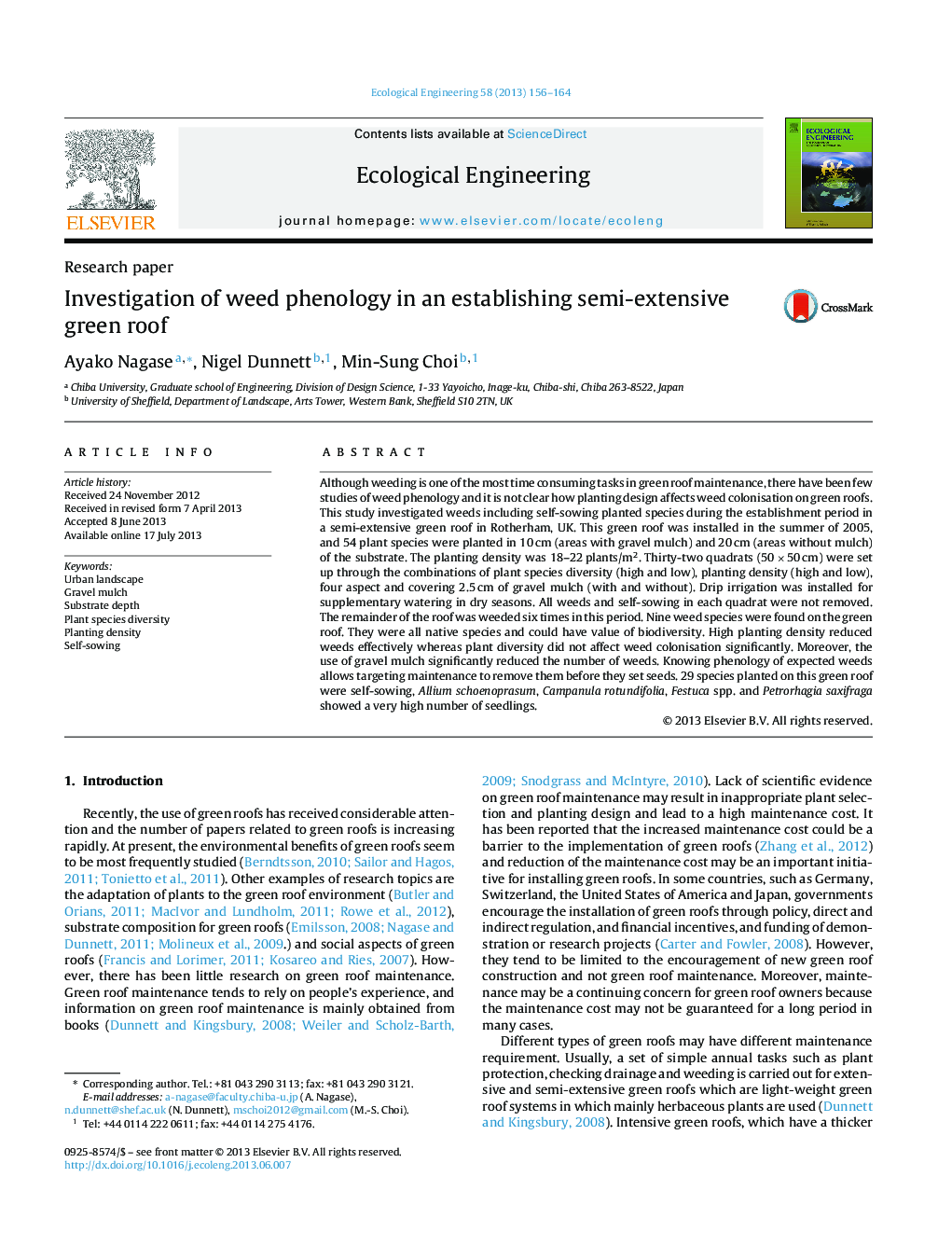| Article ID | Journal | Published Year | Pages | File Type |
|---|---|---|---|---|
| 6302503 | Ecological Engineering | 2013 | 9 Pages |
Abstract
Although weeding is one of the most time consuming tasks in green roof maintenance, there have been few studies of weed phenology and it is not clear how planting design affects weed colonisation on green roofs. This study investigated weeds including self-sowing planted species during the establishment period in a semi-extensive green roof in Rotherham, UK. This green roof was installed in the summer of 2005, and 54 plant species were planted in 10Â cm (areas with gravel mulch) and 20Â cm (areas without mulch) of the substrate. The planting density was 18-22Â plants/m2. Thirty-two quadrats (50Â ÃÂ 50Â cm) were set up through the combinations of plant species diversity (high and low), planting density (high and low), four aspect and covering 2.5Â cm of gravel mulch (with and without). Drip irrigation was installed for supplementary watering in dry seasons. All weeds and self-sowing in each quadrat were not removed. The remainder of the roof was weeded six times in this period. Nine weed species were found on the green roof. They were all native species and could have value of biodiversity. High planting density reduced weeds effectively whereas plant diversity did not affect weed colonisation significantly. Moreover, the use of gravel mulch significantly reduced the number of weeds. Knowing phenology of expected weeds allows targeting maintenance to remove them before they set seeds. 29 species planted on this green roof were self-sowing, Allium schoenoprasum, Campanula rotundifolia, Festuca spp. and Petrorhagia saxifraga showed a very high number of seedlings.
Related Topics
Life Sciences
Agricultural and Biological Sciences
Ecology, Evolution, Behavior and Systematics
Authors
Ayako Nagase, Nigel Dunnett, Min-Sung Choi,
